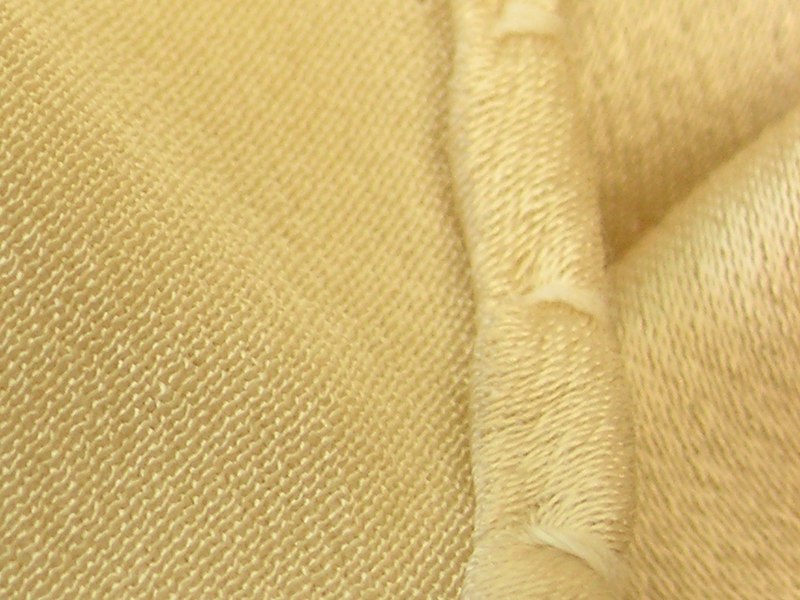The key difference between crepe and georgette is that crepe has a wrinkled, bumpy look whereas georgette is matte and dull. Both crepe and georgette are famous fashion fabrics woven using high-twist yarns. At present, they are used in making evening dresses, blouses, sarees, and home decors like curtains and pillows.
Key Takeaways
- Crepe is a luxurious material made from silk, wool, or synthetic fabric, and has a wrinkled, bumpy look.
- Georgette is a fabric traditionally made from pure silk, and has a matte, dull finish.
- Crepe fabrics tend to be thinner and more lustrous, while georgette fabrics are thicker and less lustrous.
What is Crepe?
Crepe is a luxurious material made from silk, wool, or synthetic fabric. It has a distinctive, wrinkled, and bumpy look. It is usually lightweight to medium-weight fabric. This material is used to make various clothes like dresses, blouses, pants, eveningwear, scarves, and suits. It is also used to make home décor items like curtains and pillowcases. Garments made from silk and wool crepe are comfortable. Wool crepe, which is more durable and heavier than silk crepe, is generally used to make sweaters and dresses. This fashion fabric is most commonly used in weddings, photoshoots, galas, and other high-class settings.
There are various types of crepe materials. Crepe georgette is made from silk or synthetic silk-like fibres such as rayon and has a softer and smoother look, while crepe de Chine is made from silk. Wool crepe is rougher; polyester crepe is made from synthetic fibre polyester, and crepe back satin has a smooth one side, and the other side has a crinkled crepe feel. Moreover, Canton crepe is made from silk in Canton, while Plisse crepe is chemically treated to get a puckered and crinkled look. Crepe charmeuse is silk fabric woven using a satin weave technique with crepe twist yarns.
Crepe should be dry cleaned because they will shrink significantly if you wash them in a washing machine. However, some varieties can be hand-washed using cold water and laid flat to dry.
What is Georgette?
Georgette is a fabric traditionally made from pure silk. It can also be made using polyester, rayon, or viscose. It was introduced by the French dressmaker Georgette de la Plante in the early 20th century. This material is sheer, lightweight, and has a matte, dull finish. It is used to make sarees, dresses, and home décor. Silk georgette is almost like silk chiffon, while crêpe georgette is made using tightly twisted yarns.
Georgette material is lightweight and breathable. However, georgette material made with synthetic fibres is less breathable than silk georgette. It is also translucent and very flowy, so it can be nicely draped. At the same time, this material holds dye well.
There are various types of georgette materials. Some of these include double georgette, which is thicker and somewhat translucent; stretch georgette, which adds elastic components into the weave for added stretch; satin georgette, which has a shinier finish; polyester georgette, which is made from polyester; and Jacquard georgette, which is woven on a jacquard loom.
When washing clothes made using this material, you have to use cold water and mild detergent. You also have to make sure not to wring, stretch, or pull the garment when washing it.
What is the Difference Between Crepe and Georgette?
The key difference between crepe and georgette is that crepe has a wrinkled, bumpy look, whereas georgette is matte and dull. Moreover, georgette fabrics tend to be thicker than crepe fabrics.
Summary – Crepe vs Georgette
Crepe is a luxurious material made from silk, wool, or synthetic fabric. It has a wrinkled, bumpy look and is thin. Georgette is a fabric made from pure silk, and it is matte and dull. It is thick and less lustrous than the crepe fabric. Thus, this is the summary of the difference between crepe and georgette.
